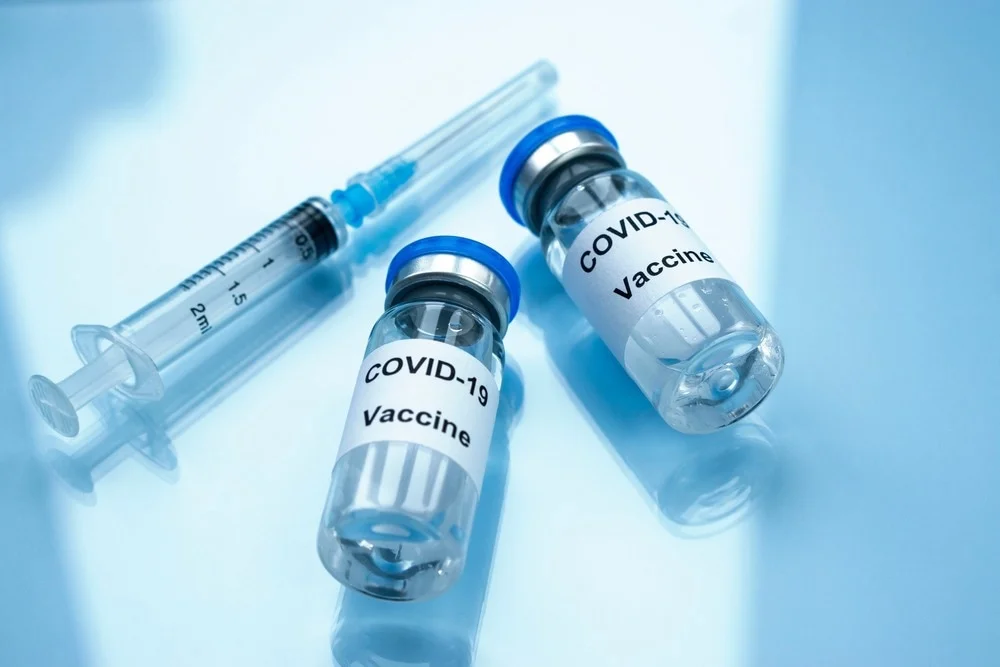In a recent study posted to the medRxiv* preprint server, researchers evaluated the bivalent [encoding spike (S) proteins of severe acute respiratory syndrome coronavirus 2 (SARS-CoV-2) D614 strain and the Beta variant of concern (VOC)] vaccine efficacy (VE) against the Omicron VOC.
 Study: Efficacy of a bivalent (D614 + B.1.351) SARS-CoV-2 Protein Vaccine. Image Credit: Tanya Dol/Shutterstock
Study: Efficacy of a bivalent (D614 + B.1.351) SARS-CoV-2 Protein Vaccine. Image Credit: Tanya Dol/Shutterstock

 *Important notice: medRxiv publishes preliminary scientific reports that are not peer-reviewed and, therefore, should not be regarded as conclusive, guide clinical practice/health-related behavior, or treated as established information.
*Important notice: medRxiv publishes preliminary scientific reports that are not peer-reviewed and, therefore, should not be regarded as conclusive, guide clinical practice/health-related behavior, or treated as established information.
Background
First-generation COVID-19 vaccines were developed using D614 S proteins. However, the continual emergence of novel SARS-CoV-2 VOCs has threatened vaccine efficacy, and updated vaccines encoding VOC S proteins are required for COVID-19 mitigation. Vaccines encoding Omicron proteins have effectively curtailed Omicron transmission; however, data pertaining to non-Omicron protein-encoding vaccine efficacy against Omicron are limited.
About the study
In the present Phase 3 randomized, modified double-blinded, placebo-controlled study, researchers evaluated the safety and VE of double bivalent vaccine administration during the Omicron predominance period between October 19, 2021, and February 15, 2022.
The study comprised adults who were unvaccinated against SARS-CoV-2 before the commencement of the study. The participating individuals were allocated in a 1:1 ratio to either receive two bivalent vaccine infections intramuscularly three weeks apart of a bivalent SARS-CoV-2 recombinant protein vaccine or placebo (saline) injections. The first stage of the study involved the evaluation of recombinant vaccine efficacy.
The second stage was conducted across eight nations (Ghana, Colombia, Kenya, India, Nepal, Mexico, Ukraine, and Uganda) at 54 clinical research centers. Nasopharyngeal swab specimens and serum samples were obtained before both vaccinations to identify SARS-CoV-2-infected and uninfected individuals.
Further, CLI (coronavirus disease 2019-like illness) surveillance was performed. In the case of positive CLI symptoms, anterior nasal or nasopharyngeal swab specimens were obtained from the participants and subjected to nucleic acid amplification tests (NAAT) to confirm the presence of SARS-CoV-2.
Furthermore, genomic sequencing analysis was performed to identify the causative VOC. The prime study endpoint was symptomatic SARS-CoV-2 infection development prevention ≥2.0 weeks post-second vaccine dose (PD2). Secondary endpoints were symptomatic COVID-19 occurrence among infected and uninfected participants, moderate or severe COVID-19, and associated hospitalizations ≥2.0 weeks of PD2.
SISRs (solicited injection site reactions) and SSRs (solicited systemic reactions) occurring within a week of vaccination and unsolicited, non-serious AEs (adverse events) that occurred in ≤3.0 weeks of vaccination were analyzed among 2,000 individuals of each group, and all individuals aged ≥60.0 years. For the sensitivity analysis, it was assumed that Omicron was the causative VOC for the un-sequenced cases.
Results
In total, 13, 506 individuals were initially randomized, of which 504 participants were excluded from the analysis due to incomplete data. Further, 414 individuals withdrew from the study, of which 89 individuals discontinued PD2. As a result, 12,924 individuals who received ≥1.0 doses were analyzed, of which 11,416 individuals received both doses, and three-quarters of the individuals had prior SARS-CoV-2 exposure. Thirty-two percent of individuals were at high risk of developing COVID-19.
The average age of the study participants was 36.0 years, and most (58%) were men. In both groups, individuals were followed up after the first and second doses for 148.0 days and 234.0 days, respectively. Up to March 15, 2022, 121.0 symptomatic SARS-CoV-2 infection cases were documented, of which 32.0 cases and 89.0 cases occurred in the vaccine group and placebo group, respectively, ≥2.0 weeks of PD2 with 65.0% VE. VE estimates were and 75% and 31% among individuals exposed and unexposed to SARS-CoV-2, respectively.
Among cases for which the causative VOC was identified, most (n=63) cases were caused by Omicron BA.1 or BA.2 sub-VOC infections, and four cases of Delta infections were reported. Similar findings were observed in the sensitivity analysis.
Three vaccinees documented severe SARS-CoV-2 infection, and five vaccinees documented moderate/worse SARS-CoV-2 infection with symptoms occurring from two weeks of PD2. After PD1, VE against symptomatic SARS-CoV-2 infection was found to be 60.0%, and VE estimates against symptomatic Omicron infections among all individuals, SARS-CoV-2-exposed individuals, and unexposed individuals were 63%, 74%, and 28%, respectively.
VE related to SARS-CoV-2 infections without symptoms among unexposed individuals was 1.20, with 100 COVID-19 cases among the vaccinees. The findings showed higher cumulative COVID-19 incidence among placebo vaccine recipients than the bivalent vaccine recipients after 2.0 weeks of PD2. The bivalent vaccine was safe and tolerated well by the study participants. Unsolicited AEs ≤30.0 minutes after vaccine injections were reported by <0.1% of individuals, and SISRs and SSRs ≤7 days after vaccine injections occurred in 58% and 41% of the vaccinees. No participant died due to COVID-19.
Conclusion
Overall, the study findings showed that the bivalent COVID-19 vaccine conferred heterologous immune protection against symptomatic Omicron BA.1 sub-VOC and Omicron BA.2 sub-VOC infections among adult individuals with prior SARS-CoV-2 exposure.

 *Important notice: medRxiv publishes preliminary scientific reports that are not peer-reviewed and, therefore, should not be regarded as conclusive, guide clinical practice/health-related behavior, or treated as established information.
*Important notice: medRxiv publishes preliminary scientific reports that are not peer-reviewed and, therefore, should not be regarded as conclusive, guide clinical practice/health-related behavior, or treated as established information.